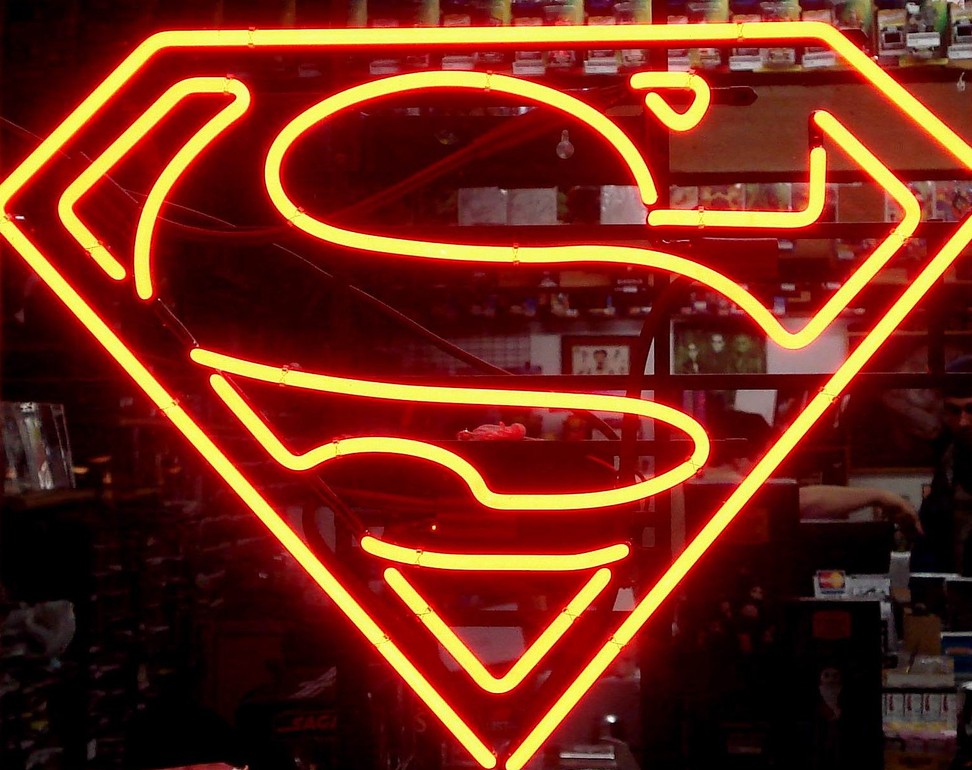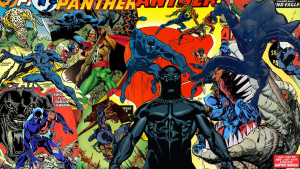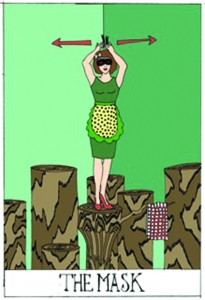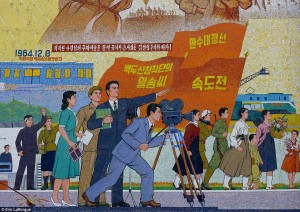
Truth, Justice and the American Way: The secret politics of the superhero
by Kyran Schmidt | April 5, 2015
In 1912, a socialist revolutionary named Iosif Dzhugashvili penned an article in the St Petersburg based newspaper Pravda under the pseudonym ‘Stalin’. Operating under various different names during his lifetime, it was neither his first nor his favourite alias, but it was to prove the most enduring.
It remains one of the more delicious ironies of pop culture that 26 years later another was to receive that name (or at least, its English equivalent). Despite making his debut five issues earlier, Action Comics #6 (1938) marks the first time that America’s favourite son, one Clark Kent, a.k.a. Superman, is described as the ‘Man of Steel’, a nickname into which Iosif’s chosen pseudonym ‘Stalin’ translates.
Where one is a swashbuckling socialist turned frightful despot of the Soviet Union, the other is a wholesome emblem of “Truth, Justice and the American Way”, as his motto goes – a Mid-western lad with good morals, courteous manners and perfectly coiffed hair.
It is not entirely clear, but Superman’s writers were probably oblivious to the fact their creation shared this attribute with Stalin. Still, these two men of steel share more than their etymology: another affinity lies in their importance as political symbols. Little needs to be said for the way Stalin manufactured a cult of personality under which he existed as the chief embodiment of the Soviet regime; what should not be ignored is that the superhero comic book speaks to politics too, and is far from being just an apolitical and escapist form of entertainment.
The comic book’s so-called ‘Golden’ and ‘Silver’ ages are spoken of reverentially, as though these periods mark the twin peaks of the genre’s cultural significance. The characters first brought to ink during these periods, from Batman and Wonder Woman to the X-Men and the Hulk, remain iconic. But the growing popularity of the superhero film in recent years has seen the comic book superhero acquire a new level of cultural respectability. The genre enjoys not only commercial success (three of the top ten highest-grossing films of all time being superhero flicks), but also critical acclaim.
In this context of renewed significance, the American comic book finds itself a cultural battleground. Conservatives repeatedly accuse the industry’s major players of peddling a pernicious brand of politics to unsuspecting youngsters. DC Comic’s revelation that the first Green Lantern was gay in a 2012 reboot of the series prompted outrage from groups like One Million Moms, who called on DC to cancel the change. “They want to indoctrinate impressionable young minds by placing these gay characters on pedestals in a positive light”, the group was to suggest in a statement – only for this to spectacularly backfire days later when the group was forced to delete their Facebook page following an inundation of support for the change. If there are a few who worry about a sinister liberalism infiltrating the pages of American comics, there are just as many who see the growing use of LGBTQ characters as a token of social progress.
It is not just the more peripheral characters; not even Superman is above the political fray. The 900th issue of Action Comics, released in 2011, was the subject of international media attention for a storyline involving Superman’s renunciation of his American citizenship, following his distaste at persistently being viewed as an instrument of US foreign policy. The outrage this story was met with from conservative outlets like Fox News attests to the continuing political currency of comic books. This was tampering with the sacrosanct, an act akin to flag burning: Superman, it was argued, was nothing if not a symbol of patriotic America. Certainly he was not some bleeding-heart cosmopolitan.
Controversy about the mix between comics, politics and society is not new. Fredric Wertham, a German-American psychiatrist, was to argue in a 1954 work, Seduction of the Innocent, that comic books exercised a toxic influence on younger readers through the normalisation of violent imagery and the depiction of illicit and criminal behaviour. The work, which also suggested (perhaps not so implausibly) homosexual undertones in the relationship between Batman and Robin and a bondage subtext in Wonder Woman, was extremely influential. It prompted Wertham’s appearance before the Senate Subcommittee on Juvenile Delinquency, from which was to follow a media backlash against the comic book world and growing calls for censorship.
Yet in earlier decades, following the backlash from the congressional investigations and Wertham’s work, the superhero comic book could hardly be understood as a mouthpiece for liberal politics. On the contrary, regulations enforced by the Comics Code Authority meant comics were heavily restricted in message and content. Created in 1954 as a form of self-regulation following the anti-comic backlash, the CCA’s founding charter carried the provision, among other gems, that: “Policemen, judges, government officials, and respected institutions shall never be presented in such a way as to create disrespect for established authority.” The code which remained in place until the 2000s meant that the comics which were a product of this era were, if anything, a bastion of quietly moralistic conservatism. Those who broke the law were the bad guys, simpliciter; those who pursued these wrong-doers were the good guys, the superheroes.
Reading a comic of the era, one is struck by the pervasiveness of this black and white morality. It is a near certitude that the villain receives his comeuppance (and it is pretty much always his). There is little space for moral ambiguity. Where it does exist, it is nearly always a matter of misinterpretation. Where most of the comic’s other characters blame the Hulk for the damage he causes and seek his capture or destruction, The Incredible Hulk’s readers realise he is only as morally culpable for his mistakes as any overpowered, radiation-enhanced child possibly could be. Villains are clearly delineated, often crudely so; just compare Professor X’s ‘X-Men’ with his rival Magneto’s ‘Brotherhood of Evil Mutants’. The very name of Magneto’s group speaks to an extremely simplistic demarcation of good and evil, as if their actions were not enough. As Stan Lee, silver-haired patrician of the industry, has suggested in explanation: “We were kind of corny in those days.”
This is partly a result of the CCA restrictions. It also reflects the superhero comic’s origins. Comics’ golden age dovetails with World War II, and many of the industry’s leading lights were a part of the war effort in some form or another. Captain America Comics #1, the cover of which features Cap’ delivering a deft right-hook to Hitler’s jaw, predates Pearl Harbour by a year. This was not the time or place for a cautious ethical relativism: comics’ clear-cut moral categories provided a sense of reassurance in an uncertain age and the optimism that history was on the side of the good.
It is clear then that comics are not silent regarding matters political. They have, in fact, a remarkable ability to dramatize our own ideological and political conflicts. Their heroes often look very much like our own: where Professor X of the X-Men takes a conciliatory approach to mutant-human relations, aspiring to a world in which the two races coexist peacefully, his nemesis and former friend Magneto is more combative, espousing separatist views under the conviction that coexistence is untenable. The shadows of Martin Luther King and the earlier Malcom X loom large.
Alongside the more self-consciously political works of Alan Moore, like V for Vendetta or Watchmen (which entertain a greyer moral and political landscape than most other works), the X-Men comics are some of the most political and socially aware of all, addressed as they are to questions of racial struggle and group identity. But it is fair to say that the superhero comic in general carries as much ideological baggage as any other literary form.
If anything, the superhero comic evinces a kind of pragmatist political sensibility. This again is a delightful irony. The superhero negotiates a strange world populated by men and women in capes, a world in which the bite of a radioactive spider or overexposure to gamma rays, far from making one very ill, can instead confer superhero status. But for all this indulgence of fantasy, if the superhero comic is to be characterised by any kind of distinctive ideological or political orientation, it seems accurate to say that it is defiantly anti-utopian in vision. Comics’ growing use of LGBTQ characters looks less like the upshot of some doctrinaire social liberalism than just a reflection of changing social mores and a general fading in the conservatism which informed the genre’s earlier years; it is in comics’ attitude toward utopian ideas that the comic is at its most political.
It is always the villain, not the superhero, with the grand scheme for fashioning the world anew, the attempted implementation of which leads to destruction and their almost certain defeat. If the men and women who inhabit the world of the superhero committed no crime or evil, their heroes would be redundant. A perfect world would not want for their glorified executors of vigilante justice. Comics are studies in the messiness of politics and social existence; superheroes do have a place, because they occupy imperfect worlds. The superhero comic, at its most political, offers a cautionary tale against ideology and fantastical plans for reshaping society. The villain, unreconciled to this fact, is doomed to failure.




